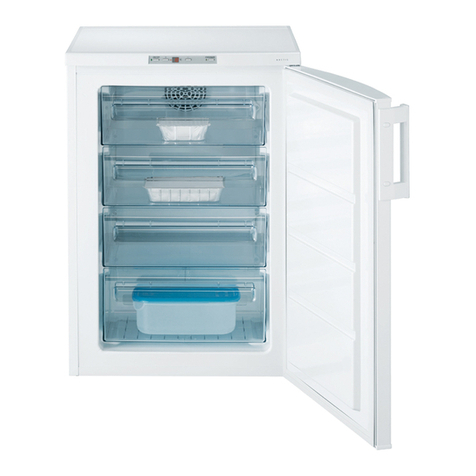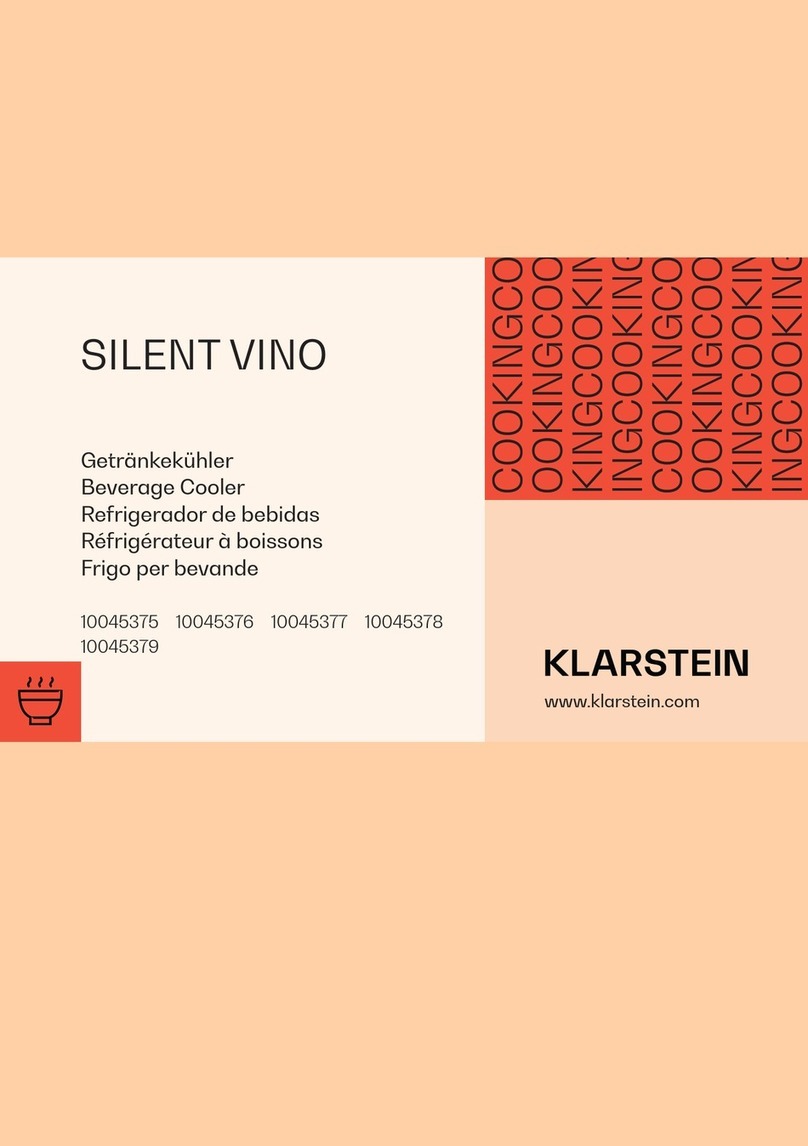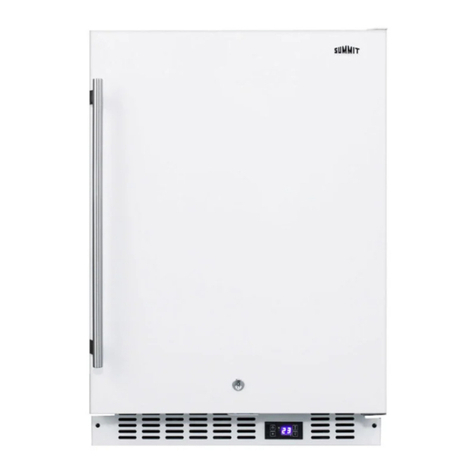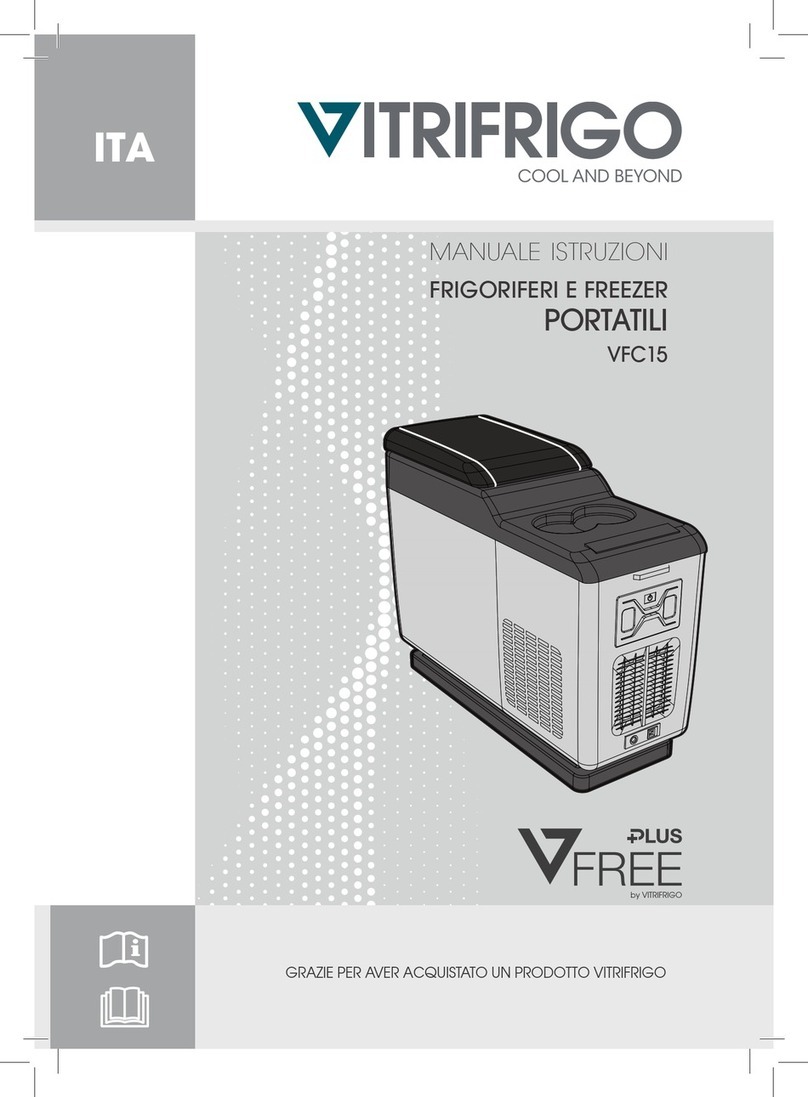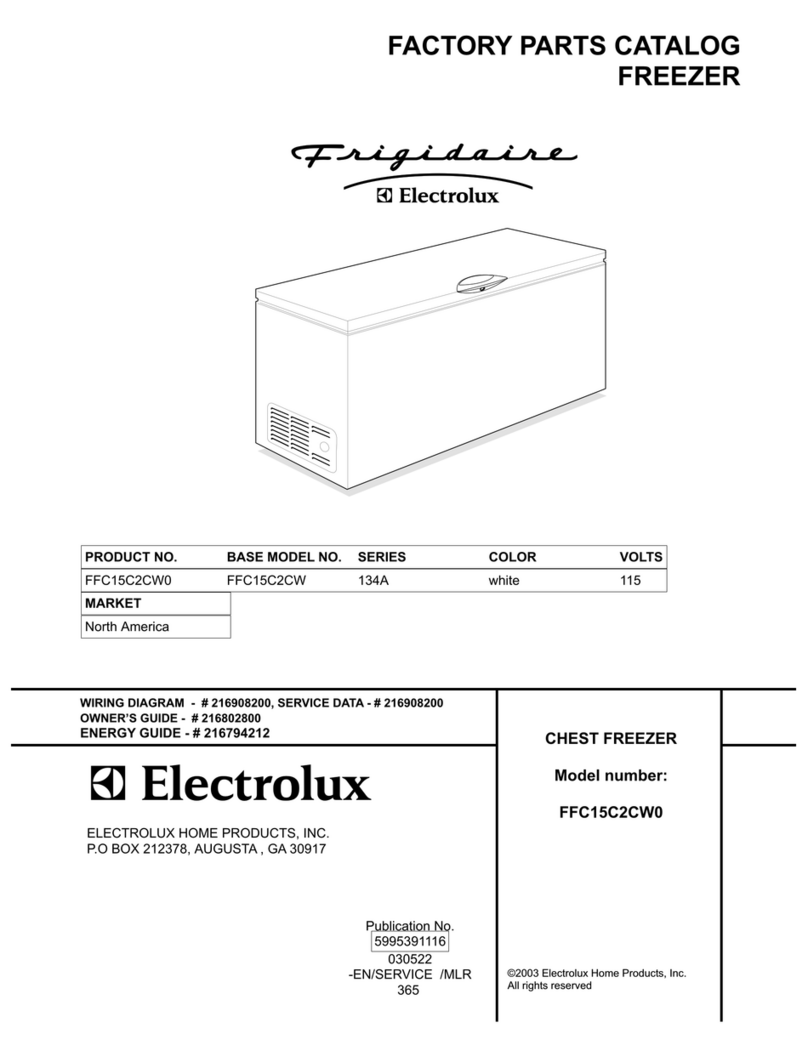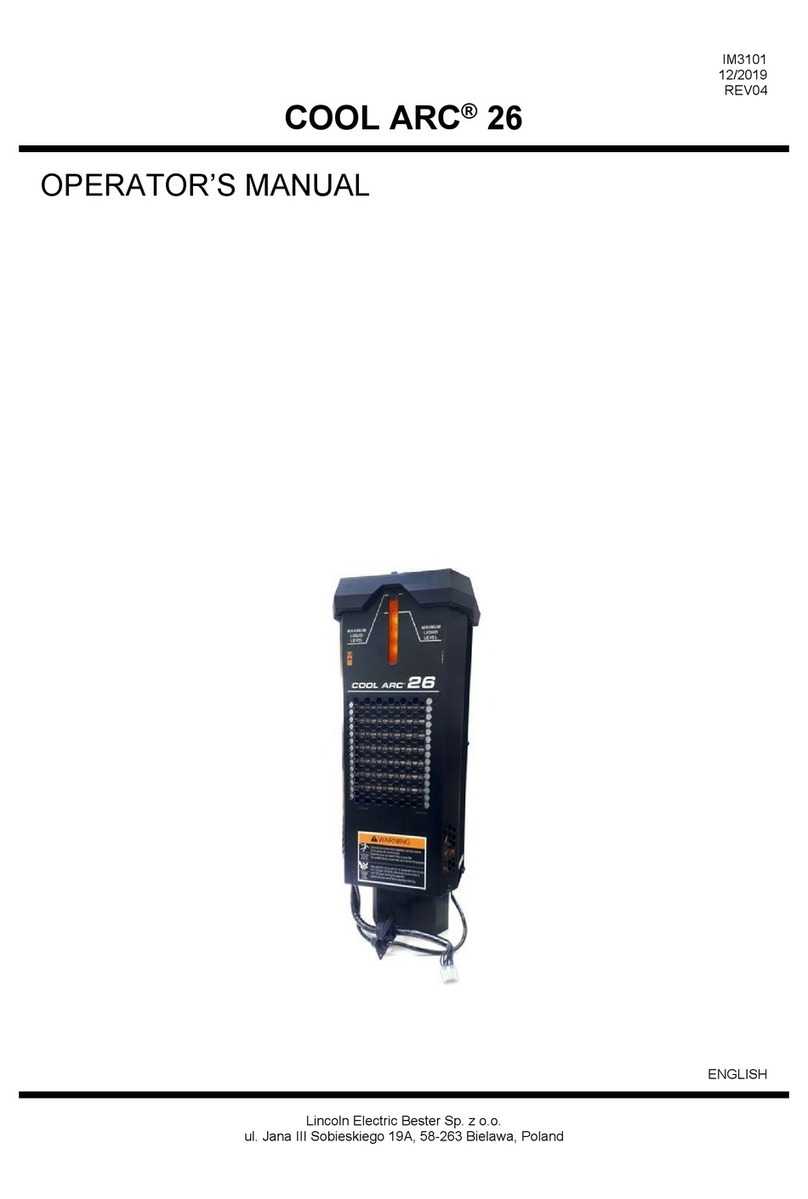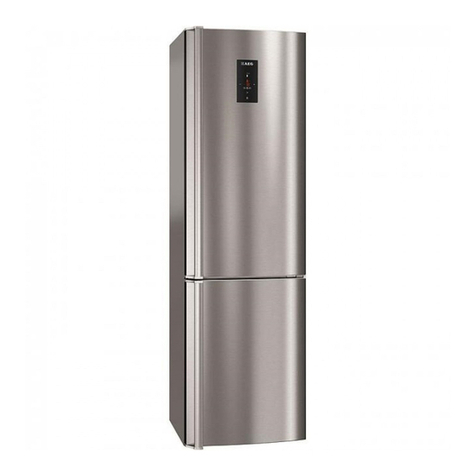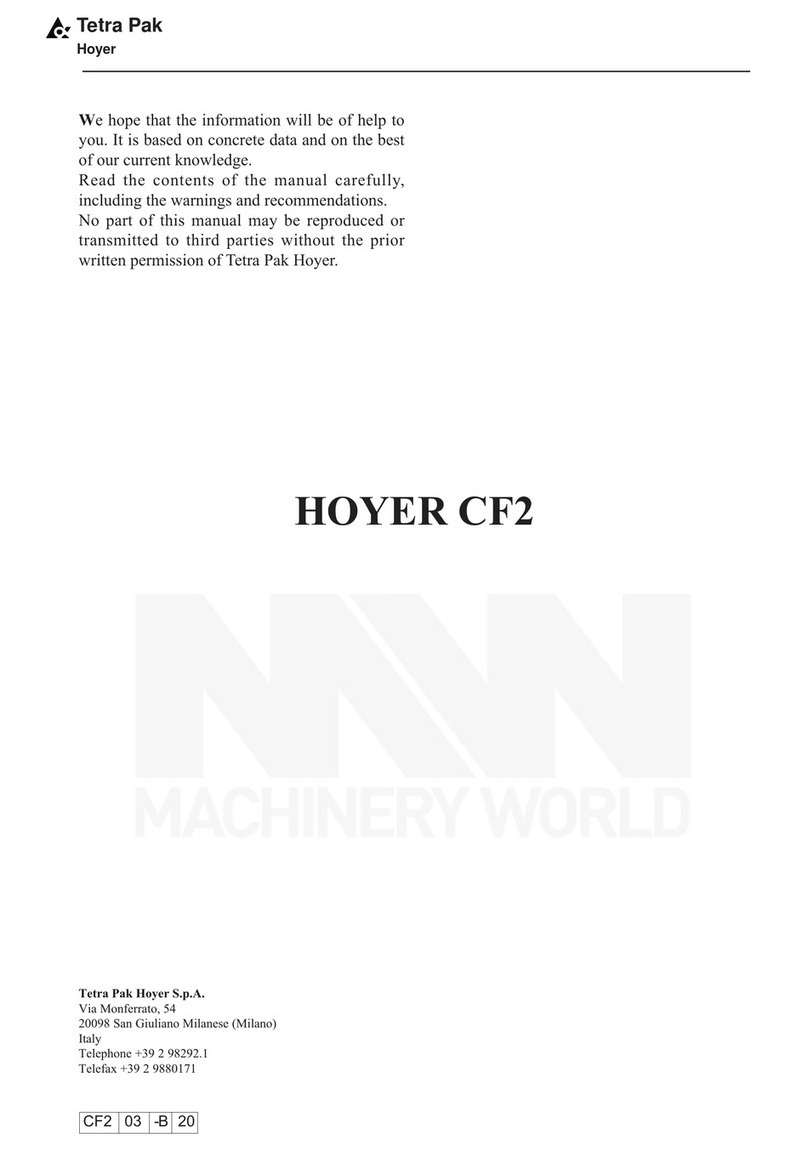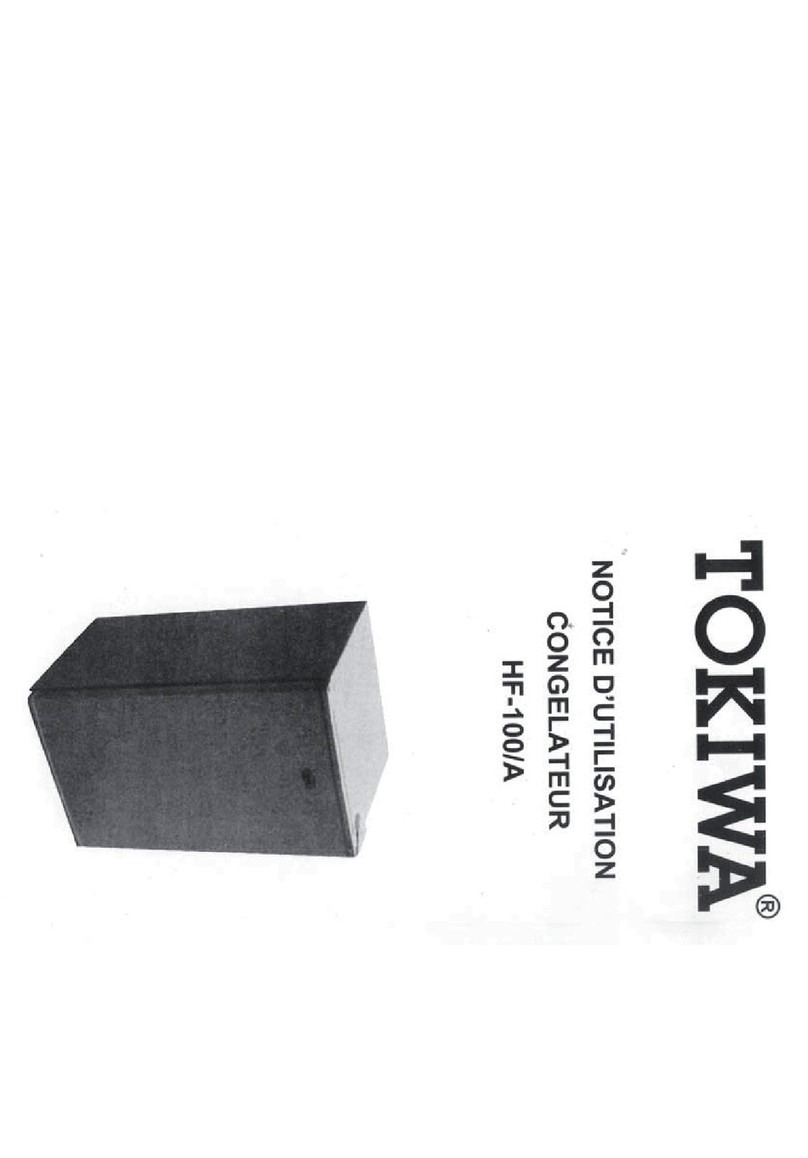Swiss HS-111F User manual

Instruction Manual
Upright Freezer
MODEL: HS-111F
Dimensions : (W) 553mm x (D) 574mm x (H) 845mm
(solar compatible freezer 0.48kw/24h)

2
Dear customer:
Thank you for buying the Swiss Appliance Under-counter freezer.
To ensure that you get the best results from your new freezer, please
take time to read through the simple instructions in this booklet.
Please ensure that the packing material is disposed of in accordance
with the current environmental requirements.
When disposing of any Freezer equipment please contact your local
waste disposal department for advice on safe disposal.
This appliance must be only used for its intended purpose.
CAUTION :
The appliance is not intended for use by young children or infirm
persons without supervision.
Young children should be supervised to ensure that they do not play
with the appliance.

3
General
This type of refrigerator is widely used in places such as
hotels ,offices, student dormitories and houses. It is mostly suitable
for freezing and preserving foods. It has the following advantages:
small size, lightweight, low electric consumption and ease of use.
Main configuration:(models may vary)
1. Thermostat
2. Drawer
3. Leveler leg
1
2
3

4
UNPACKING YOUR NEW FREEZER
WARNING: Use two or more people to move Freezer.
Failure to do so can result in back injury.
·Remove tape and any labels from your Freezer before using
(except the rating label).
·To remove any remaining tape or glue, rub the area briskly with your
thumb.
·Tape or glue residue can also be easily removed by rubbing a small
amount of liquid dish soap over the adhesive with your fingers.
Wipe with warm water and dry.
·Do not use sharp instruments, rubbing alcohol, flammable fluids, or
abrasive cleaners to remove tape or glue. These products can
damage the surface of your Freezer.
·When moving the Freezer, do not tilt the Freezer beyond 45° from
upright position.
CLEANING BEFORE USE:
After you remove all of the packaging materials, (especially the
foam between the outside condenser and cabinet)clean the inside of
your Freezer before using it.
SPACE REQUIREMENTS
WARNING: Keep flammable materials and vapours, such as
gasoline, away from the Freezer.
Failure to do so can result in death, explosion, fire or burns.
·To ensure proper ventilation for your Freezer, allow for 200mm
space on each side between walls, 200mm space between back of
your Freezer and the wall, and 300mm space between counter top

5
and the roof or ceiling.
·If you are installing your Freezer next to a fixed wall, leave sufficient
space on the hinge side to allow for the door to swing open.
·Never install your Freezer near heat source and direct sun.
ELECTRICAL REQUIREMENT
WARNING: DO NOT REMOVE EARTH PIN FROM PLUG.
DO NOT USE AN ADAPTOR.
DO NOT USE AN EXTENSION CORD!!
Failure to follow these instructions can result in death, fire or electrical
shock.
Before you move your Freezer into its final location, it is important to
make sure you have the proper electrical connection.
Recommended Earthing Method
A 220~240 Volt /50 Hz AC only 10 ampere fused and properly
earthed electrical supply is required. It is recommended that a
separate circuit serving only this appliance be provided. Use a
receptacle which cannot be turned off with a switch or pull chain. Do
not use an extension cord.
NOTE: Before performing any type of installation, disconnect the
Freezer from the electrical source. When you are finished, connect
the Freezer to the electrical source and reset the control to the
desired setting.

6
LEVELING
If the Freezer is not level during installation, the doors may not
close or seal properly, causing cooling, frost, or moisture
problems. It is very important for the Freezer to be level in order to
function properly.
To level your Freezer you may either turn the level leg clockwise to
raise that side to the Freezer or turn counter –clockwise to lower that
side.
NOTE: Have someone tilt the freezer slightly backwards to take
some weight off the leveling leg while making adjustments.
USE OF THE APPLIANCE
To obtain the best possible results form your Freezer, it is important
that you operate it properly.
Temperature Control (Some models may vary)
The temperature in the freezer is controlled by the thermostat control
knob. It is located at the top-front of the freezer. Turn the thermostat
control knob up or down to regulate the temperature inside the
freezer. The markings on the control knob indicate “1~4”for different
temperature levels. The temperature decreases with
position “1”being the warmest and position “4”
being the coldest.
For South African conditions, choose setting
number “ 3” or “4”.

7
Store Frozen Food
When using the freezer for the first time or after defrosting, turn the
temperature control to set “4”for at least two hours before loading
any food into the Freezer.
All frozen food products you purchase should be placed in the
freezer as soon as possible to avoid the frozen food from defrosting.
Storage recommendation printed on the packaging of frozen food by
the manufacturers should be always be followed.
Be careful that the drawer or food does not interfere with the
refrigeration pipeline.
Freezing Fresh Food
Ensure that your freezing operations are carried out under the most
hygienic conditions as freezing alone does not sterilize the food. It is
advisable to freeze the food by packing it into separate meal portions
and not in bulk form. Never put hot or even warm foodstuffs into the
freezer. Prior to storing food, pack it in plastic bags, aluminum sheets
or freezing containers and place into the freezer. See the data sheet
at the rear of this booklet for the maximum permissible amount in
kilograms of fresh food that can be frozen in any 24 hour period with
a room temperature of 25℃. Never freeze more than the maximum
permissible amount.
Note: Never put glass bottled food or drinks in the freezer
compartment.
.For best performance, leave enough space in the Freezer
compartment for air to circulate around the packages.
Notice:You can use this unit without the drawers under some
conditions.

8
Defrosting
Remove the mains plug from the wall socket, open the door and
remove all the food. Defrost using a plastic scraper, or let the
temperature rise naturally until the frost melts. Then wipe away the
remaining ice and water, after this plug the freezer back into the
mains supply.
Note: To avoid damaging the freezing compartment wall, do not
use any sharp objects to remove the frost or separate
the frozen food. The guarantee falls away should you use a
sharp object.
Cleaning your freezer
Before you start to clean your freezer remove the mains plug from
the power supply.
Use a clean sponge or soft and a mild detergent in warm water.
Hand wash, rinse and dry all surfaces thoroughly.
Do not use cleaning waxes, concentrated detergents, bleaches or
cleaners containing petroleum on plastics and rubber parts.
Never use paper towels, window sprays, scouring cleansers or
flammable fluids on plastic parts as these can scratch or damage the
inside of the freezer.
Clean with a damp cloth and then dry with a soft cloth.
PROLONGED OFF PERIODS
If the freezer is not in use for a long period of time, proceed as
follows:
Disconnect the freezer from the main supply by removing the plug
from the wall socket.
Clean and dry the inside as instructed under the heading “cleaning
the Freezer”.
Leave the door open to prevent any unpleasant smells from building

9
up while the freezer is not in use.
TROUBLESHOOTING
In case of malfunction, you can solve many common problems easily
before contacting the retailer or Agent to avoid costs being incurred.
Your Freezer will not operate…Check if
-- The power supply cord is unplugged.
-Check the adaptor (if you are using one)
The doors will not close completely…Check if
-- The drawers are out of position.
-- The door gaskets/seals are dirty.
-- The Freezer is not level.
The freezer is noisy when running…Check if
-- The freezer is installed level and it is not in contact with another
appliance or kitchen furniture. Place rubber pads under the feet.
The freezer does not cool sufficiently…Check if
-- If the door has been opened too often, or it has been left open.
It will take time for the freezer to reach its set temperature.
-- Check that there is sufficient airflow at the rear of the freezer
due to insufficient clearance.
The following characteristics should not be looked upon as a
problem.
-- A gentle tricking flow sound caused by coolant flowing in the
pipes.
-- Compressor operating at high temperature

10
REQUESTING ASSISTANCE OR SERVICE:
Please note that should a technician be
dispatched and it is determined that the fault
is not a manufacturing or factory fault, the
costs of the call-out and any subsequent
labour cost will be incurred by the customer.
If the problem is not due to one of the items listed in Troubleshooting,
Contact the dealer or authorized Service Company.
RECOMMENDATIONS
1) WARNING –Keep any ventilation openings in the appliance
enclosure or in the built-in structure clear of any obstruction.
2) WARNING –Do not use mechanical devices or any other
means to accelerate the defrosting process, other than those
recommended by the manufacturer.
3) WARNING –Do not damage the refrigerant circuit.

11
4) WARNING –Do not use electrical appliances inside the food
storage compartments of the appliance, unless they are of the type
recommended by the manufacturer.
5) The appliance has to be unplugged after use and before
carrying out user maintenance on the appliance.
6) This appliance is not intended for use by persons (including
children) with reduced physical, sensory or mental capabilities, or
lack of experience and knowledge, unless they have been given
supervision or instruction concerning the use of the appliance by a
person responsible for their safety.
7) Children should be supervised to ensure that they do not play
with the appliance.
8) If the supply cord is damaged, it must be replaced by the
manufacturer, its service agent or similarly qualified persons in order
to avoid an electrical hazard.
9) Please abandon the refrigerator according to local regulators.
10)Please abide by all local regulations regarding disposal of the
appliance due to its flammable refrigerant and blowing gas. Before
you scrap the appliance, please remove doors to prevent any
possibility of children being trapped inside the unit.

12
Refrigerator door installation guidelines on
swapping left & right (optional)
1. Remove the screws behind the fixed roof with cross-slot
screwdriver and remove the cover from the freezer.
2. Remove the screws fixing the top-hinge with a cross-slot
screwdriver.
3. Move the top-hinge and the door limit block and the door
bearing bush to the other side
The two
screws fixed
the cover.
Screws securing
top-hinge

13
4. Move the door bearing bush and the limit block to the other side.
5. Disassemble the screws fixing the bottom-hinge with a
cross-slot screwdriver and move the hinge to the other side
then secure tightly
Note:the refrigerator incline angle must be less 45°.

14
6 Move the adjustable foot to the other side and make sure the
cabinet is level
Screws securing
the bottom hinge

15
7. Set the door in the right position by ensuring the door is parallel
with the freezer body, tighten the top-hinge, secure the top cover.
NOTE:
To take the door off, it is necessary to tilt the Appliance backward。
You should rest the Appliance on something solid such as a chair,
just below the top panel。
Do not lay the Appliance completely flat as this may damage the
cooling system。

16
Correct Disposal of this product
This marking indicates that this product should not be disposed with other household wastes throughout the EU. To
prevent possible harm to the environment or human health from uncontrolled waste disposal, recycle it responsibly
to promote the sustainable reuse of material resources. To return your used device, please use the return and
collection systems or contact the retailer where the product was purchased. They can take this product for
environmental safe recycling.
www.swissappliances.co.za for more of our quality appliances, or to
send an enquiries, recommendation or question to our support staff.
Table of contents
Other Swiss Freezer manuals
Popular Freezer manuals by other brands
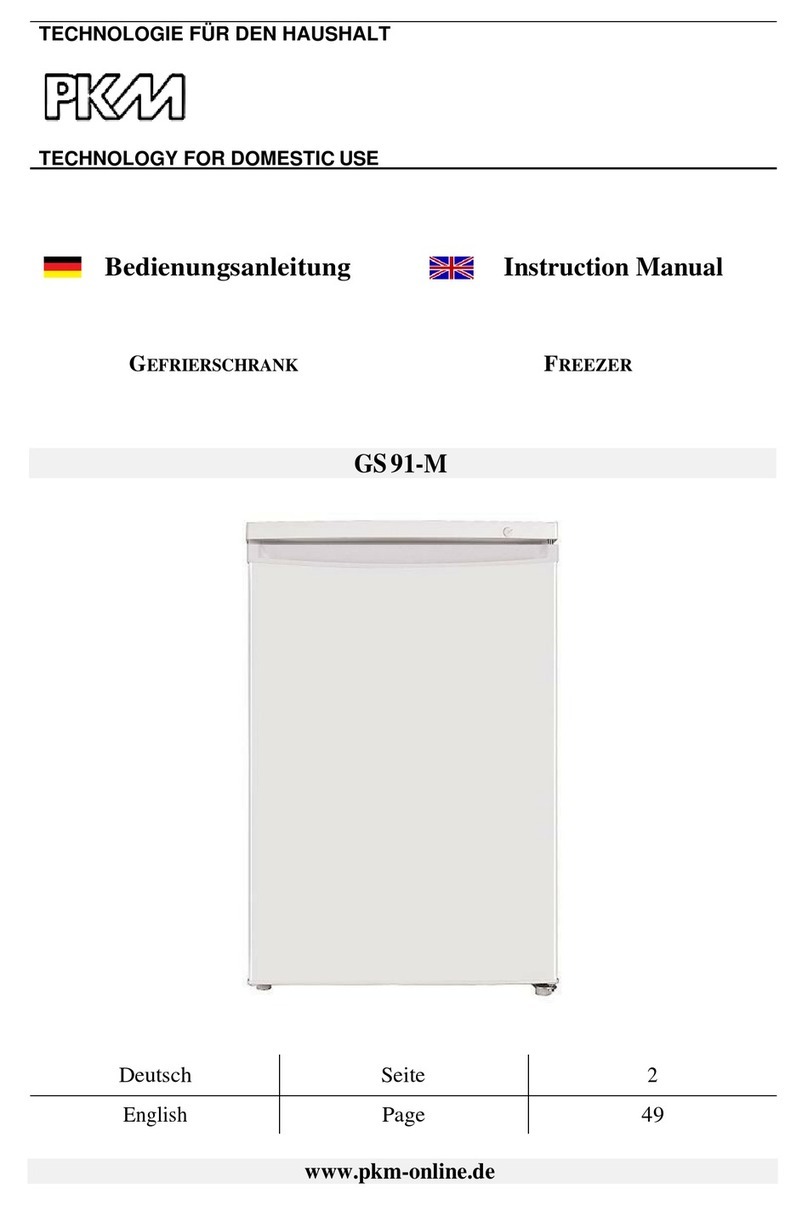
Pkm
Pkm GS 91-M instruction manual
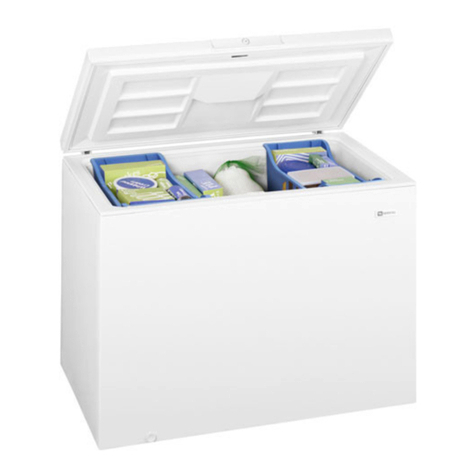
Maytag
Maytag MQC1557BEW - Chest Freezer Repair parts list
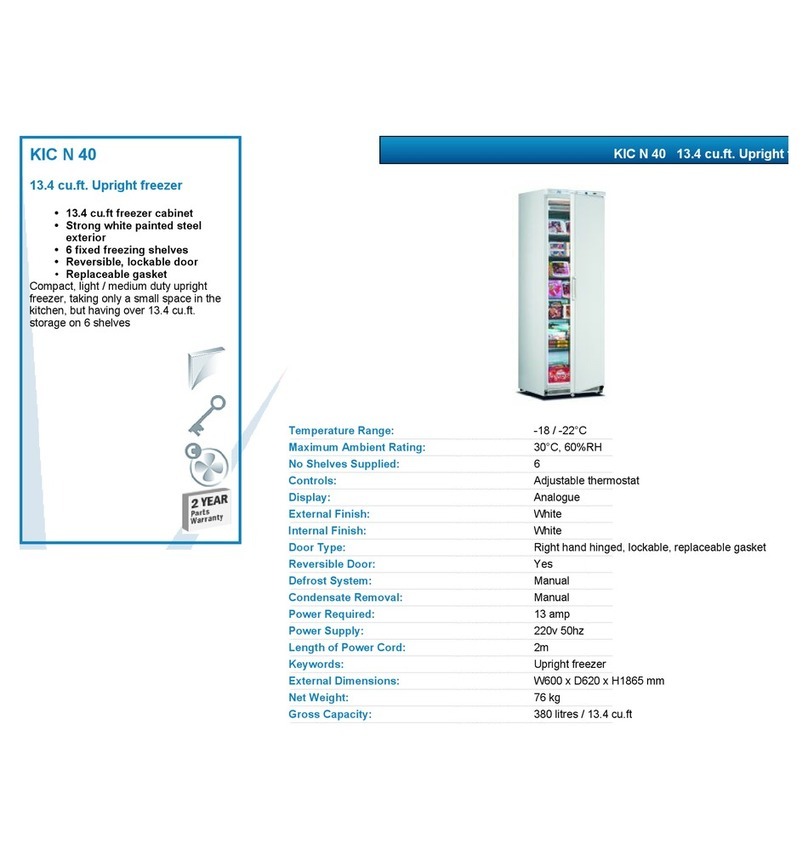
Mondial Elite
Mondial Elite KIC N 40 datasheet
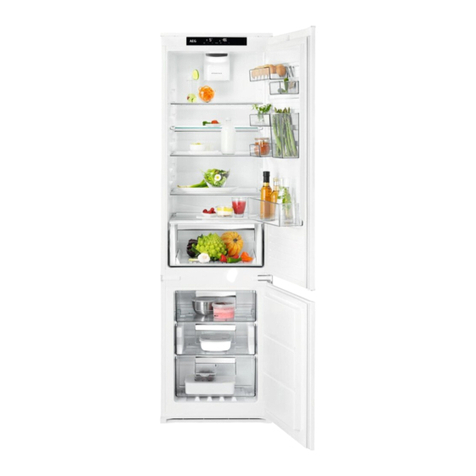
AEG
AEG SCE819E5TS user manual
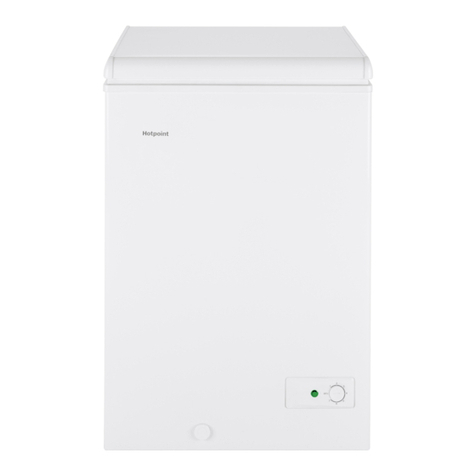
Hotpoint
Hotpoint HCM4SMWW Owner's manual and installation instructions
Electrolux
Electrolux E32AF75GTT - Icon - Refrigerator Use & care guide

